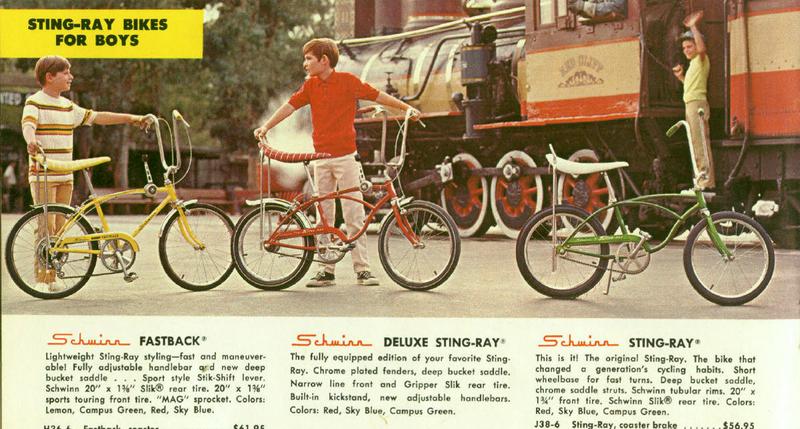Schwinn Sting-Ray: History Of The Chopper-Inspired Bike Every Kid Wanted
By | May 28, 2020

With its banana seat and "ape hanger" handlebars, Schwinn's Sting-Ray bicycle looks a bit dorky today, but if you were a kid in the '60s and '70s it was the bike to have. The sales figures don't lie -- this was a product that exploded onto the market, becoming not just successful the year it launched, but dominant. The Sting-Ray, with its slight resemblance to a motorcycle, was a step toward the bikes kids would really want a decade later -- BMX bikes. Unfortunately for Schwinn, the clairvoyance that guided their development of the Sting-Ray deserted them when BMX began to trend.

Schwinn Notices A Trend

Schwinn introduced its new design, the Sting-ray in 1963. The Sting-Ray, with its high handlebars, short frame, and long bucket shaped saddle, was the bike that some called “the bike with the sports car look.” Indeed, in some ways, it handled like a sports car, allowing riders to turn in a short radius and perform quick maneuvers. And the Sting-Ray as well as its competitors allowed riders to pop a wheelie and ride it for longer than a regular bike because of its smaller rims. The smooth tires were perfect for skid outs.
The unusual design was based on the ways that people in southern California were modifying their bikes. The kids there had been replacing the factory seats on their ordinary street bikes with banana seats and modifying the handlebars to be tall bars, transforming them to look like motorcycle sport bikes. Al Fritz, a welder who moved up into management took notice of the adaptations and created a prototype of the Sting-Ray.
A Huge Success

Management initially scoffed at the trend, but began producing the bikes, selling them at $50 each. the first run of bikes sold out quickly, and Schwinn sold 46,630 that year. To put that number in perspective, Schwinn sold about 10,000 of their other best-selling bikes annually. They would have sold more but ran out of the tires needed for the design. Within two years, other bicycle companies were producing models based on the design, and 60% of all bicycles on the market looked like the Sting-Ray.
They Move Beyond The Basic Model

Although the company began producing the bike in 1963, it first appeared in the Schwinn catalog in 1964. In 1965, Schwinn updated the design, adding slick rear tires, which they advertised as the types of tires seen on drag racers and track cars, and the tires would give the bikes more road surface than any other bike. During the first five years of the Sting-Ray’s 15 year run, according to the LA Times, Schwinn sold 2 million of the model.
By 1967, there were six models of the Sting-Ray for boys and three for girls, including the originals. The Ram’s Horn Fastback Sting-Ray had a 5-speed stick shift and “ram’s horn” handlebars that curled forward. It also had the lightweight slik rear tire and a nylon sports touring front tire. While bike gears are typically on the handlebars, the stik shift on the Fastback was on the crossbar. One of the girls’ models was the Slik Chik, which featured a flower decorated basket. The Sting-Ray also came in smaller versions for younger kids. In 1968, Schwinn released a tandem bike, the Mini-Twinn which they called “Sting-Ray styled”. Production of this bike lasted for just one year.
Resurrecting A Classic

Just as the Sting-Ray arose from a modified bike, the Sting-Ray itself was modified to become the predecessor to the BMX bikes. In the 1970s, sales of BMX bikes began to outpace the Sting-Ray, but Sting-Rays continued to be produced. In 1977, Schwinn produced a BMX, but did not corner that market. Fifty years after the first Sting-Ray was produced, in 2013, after the death of Al Fritz, who had created the prototype, the company announced the limited release of 500 chrome plated commemorative Sting-Ray bikes. In 2017, they released a limited edition reproduction of the 1971 Grey Ghost.
